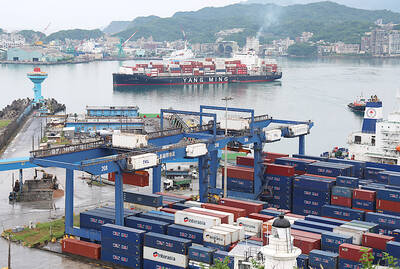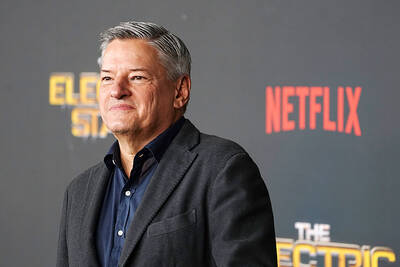Ashton Hall’s morning routine involves dunking his head in iced Saratoga Spring Water. For the company that sells the bottled water — Hall’s brand of choice for drinking, brushing his teeth and submerging himself — that is fantastic news.
“We’re so thankful to this incredible fitness influencer called Ashton Hall,” Saratoga owner Primo Brands Corp’s CEO Robbert Rietbroek said on an earnings call after Hall’s morning routine video went viral. “He really helped put our brand on the map.”
Primo Brands, which was not affiliated with Hall when he made his video, is among the increasing number of companies benefiting from influencer cosigns. Handbag maker Coach, once synonymous with mall discounts, has become a Gen-Z status symbol and saw sales soar thanks to TikTok influencers expanding their collection of purses adorned with little cherry or pretzel charms. With economic turmoil squeezing ad budgets, content creators are seen as better value than other marketing areas.

Photo: AP Content Services for QVC
“While it’s true we are seeing brands begin to pull back in marketing expenditure as a whole, the creator economy is surging,” said Kenny Gold, head of social, content and influencer at Deloitte Digital. The global influencer marketing industry is projected to grow 36 percent this year to reach US$33 billion, Statista data shows.
“This year will be the first year that advertising revenue on user generated content and platforms actually outpaces the ad revenue on professionally produced content,” said Kate Scott-Dawkins, WPP Media’s global president of business intelligence. “That’s a big deal.”
Unilever PLC’s recently appointed CEO, Fernando Fernandez, said he would hire 20 times more influencers as part of a social-first marketing strategy because consumers are “suspicious” of corporate branding.
The owner of Dove soap and Hellmann’s mayonnaise plans to dedicate as much as 50 percent of its ad budget to social media, up from 30 percent.
While fashion, beauty and accessories lead the way in employing influencer marketing, the strategy is gaining ground among consumer goods companies amid economic turbulence who are increasingly relying on influencers to position their products as premium, said Ruben Schreurs, CEO of media analytics firm Ebiquity PLC.
With the expense of TV advertising, brands are starting to look at maximizing their reach more effectively, according to Alex Burgess, global president of The Goat Agency, which counts Unilever as one of its biggest clients.
Globally, brands increased investment in influencer partnerships by 49 percent last year and content creators topped social media marketing budgets, taking up a quarter of the total annual spending on average, according to Deloitte.
Influencer marketing spending is expected “to continue to accelerate,” said Scott Morris, chief marketing officer of social media management company Sprout Social Inc.
Within the last year, Publicis Groupe SA bought Influential, the largest influencer marketing company in the world by revenue, and BR Media Group, a leader in Latin America that works with 80 percent of the region’s biggest influencers.
Publicis’ backing of players like Influential is a “strong indicator” that influencer marketing is no longer a niche, said Oliver Lewis, CEO of The Fifth, an influencer marketing agency recently acquired by digital media company Brave Bison PLC.
“They have to be very acquisitive because if they don’t acquire these capabilities across their network, they’ll be left behind,” Ebiquity’s Schreurs said.
Companies often favor smaller, independent, topic-specific influencer agencies that can connect them to creators with a strong reach and a defined audience.
The appeal is the direct line to consumers.
“It works because it feels personal, relevant and real,” Sprout Social’s Morris said. “These are qualities that traditional advertising often lacks.”
“People trust people more than they trust brands,” said Rahul Titus, global head of influence at WPP-owned Ogilvy. “Authenticity sells.”
This resonates with Gen Z digital natives in particular, a cohort with US$450 billion in global spending power. Micro-influencers — creators with 10,000 to 100,000 followers — “exert great influence” on the “the savvy and cynical” Gen Z, Jay Sinha, an associate professor of marketing at Temple University’s Fox School of Business, wrote in a paper.
As social commerce — where people buy and sell on social media platforms like TikTok Shop — becomes mainstream, brands want to create content with an “easy onward journey to purchase,” said Jessica Tamsedge, EMEA CEO of Dentsu Group Inc’s influence division.
That flexibility, affordability — they are cheaper than celebrities — and direct impact, compared with the uncertain results of shooting a TV ad or setting up billboards, is appealing.
“Unlike more traditional channels, we’re not weighed down by long lead times or heavy production guardrails,” said Nick Rogers, founder of influencer marketing agency The Cast, adding that campaign messaging can be adjusted, influencers recast and creative direction altered very quickly.
That immediate feedback loop comes with a key risk: “When it goes wrong, because it’s social, it goes wrong very quickly,” Ogilvy’s Titus said.
German sportswear maker Adidas AG was forced to publicly cut ties with Kanye West in 2022, highlighting the risk of trusting a public figure with unlimited access to a phone.
One way around that may be the emergence of artificial intelligence (AI)-generated influencers, some of which have large followings on Instagram, TikTok or OnlyFans.
Meta Platforms Inc plans to fully automate ad creation with AI, including imagery, video, text and audience targeting, the Wall Street Journal reported.
“It’s going to be very interesting to see how much value there is in being human versus an AI when it comes to engaging audiences,” Ebiquity’s Schreurs said, adding that influencers’ livelihood may be at risk from the shift.
When it comes to concerns over brand safety, clients could look more favorably on an AI-generated influencer where everything can be controlled and there are no skeletons in the closet, WPP Media’s Scott-Dawkins said.
For now, the growth runway remains clear for influencer marketing.
“What used to be seen as a bolt-on is now right at the center,” The Fifth’s Lewis said.

Taiwan’s exports soared 56 percent year-on-year to an all-time high of US$64.05 billion last month, propelled by surging global demand for artificial intelligence (AI), high-performance computing and cloud service infrastructure, the Ministry of Finance said yesterday. Department of Statistics Director-General Beatrice Tsai (蔡美娜) called the figure an unexpected upside surprise, citing a wave of technology orders from overseas customers alongside the usual year-end shopping season for technology products. Growth is likely to remain strong this month, she said, projecting a 40 percent to 45 percent expansion on an annual basis. The outperformance could prompt the Directorate-General of Budget, Accounting and

The demise of the coal industry left the US’ Appalachian region in tatters, with lost jobs, spoiled water and countless kilometers of abandoned underground mines. Now entrepreneurs are eyeing the rural region with ambitious visions to rebuild its economy by converting old mines into solar power systems and data centers that could help fuel the increasing power demands of the artificial intelligence (AI) boom. One such project is underway by a non-profit team calling itself Energy DELTA (Discovery, Education, Learning and Technology Accelerator) Lab, which is looking to develop energy sources on about 26,305 hectares of old coal land in

Netflix on Friday faced fierce criticism over its blockbuster deal to acquire Warner Bros Discovery. The streaming giant is already viewed as a pariah in some Hollywood circles, largely due to its reluctance to release content in theaters and its disruption of traditional industry practices. As Netflix emerged as the likely winning bidder for Warner Bros — the studio behind Casablanca, the Harry Potter movies and Friends — Hollywood’s elite launched an aggressive campaign against the acquisition. Titanic director James Cameron called the buyout a “disaster,” while a group of prominent producers are lobbying US Congress to oppose the deal,

Two Chinese chipmakers are attracting strong retail investor demand, buoyed by industry peer Moore Threads Technology Co’s (摩爾線程) stellar debut. The retail portion of MetaX Integrated Circuits (Shanghai) Co’s (上海沐曦) upcoming initial public offering (IPO) was 2,986 times oversubscribed on Friday, according to a filing. Meanwhile, Beijing Onmicro Electronics Co (北京昂瑞微), which makes radio frequency chips, was 2,899 times oversubscribed on Friday, its filing showed. The bids coincided with Moore Threads’ trading debut, which surged 425 percent on Friday after raising 8 billion yuan (US$1.13 billion) on bets that the company could emerge as a viable local competitor to Nvidia